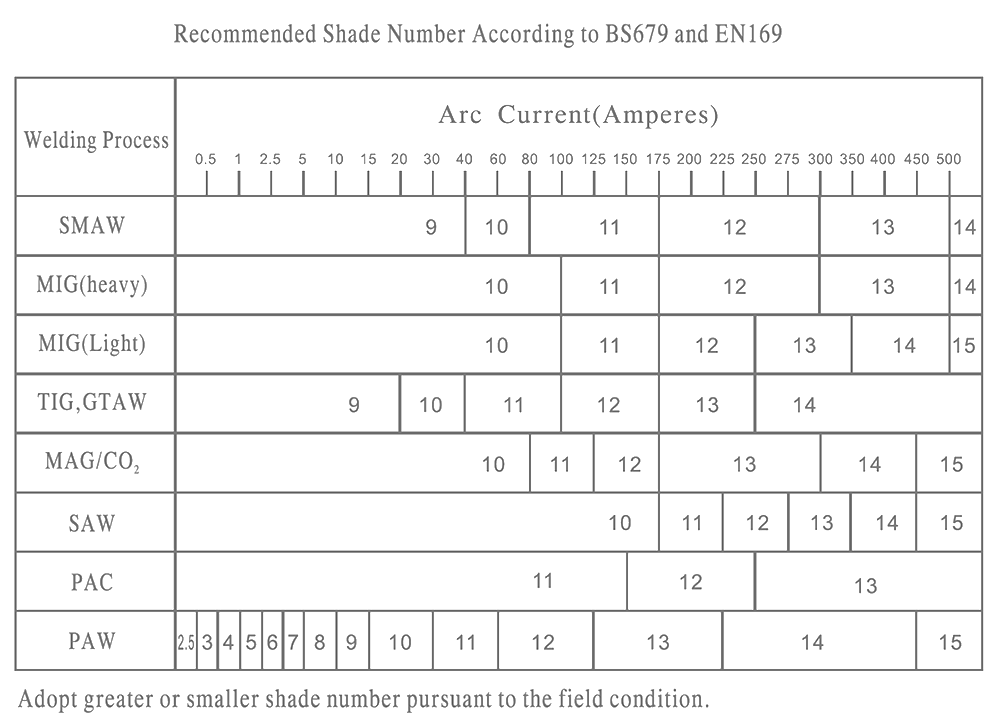1.TROUBLESHOOTING:
Some common problems listed below, together with their possible solutions, can arise when using the helmet:

Some common problems listed below, together with their possible solutions, can arise when using the helmet:
| PROBLEM | POSSIBIE CAUSE | SOLUTION |
|---|---|---|
| The filter does not darken or is unstable when switching from light to dark and viceversa | The external transparent protection of the filter is dirty or damaged | Change the exernal transparent |
| The sensors are dirty | Clean the sensor surface | |
| The level of the welding current level(sensitivity)is too low | Increase sensitivity | |
| The batteries are not in good condition or not properly inserted | Replace the batteries or remove them and re-insert them properly | |
| Battery terminals and the contact surfaces of the filter are dirtyor oxidized | Clean both | |
| The switch "WELD-GRIND"on the filter is in position "GRIND" | Place the Switch in the "WELD" | |
| Slow switching | The operating temperature is too low | The operating temperature is too low |
| Poor visibility | The external or/and internal prtection of the filter is/are dirty or damaged | Clean the dirty components and replace the damaged ones |
| Not enough light in thesyrrounding area | ||
| The scale number is not set correctly,or the fixed scale number is not suitable | Where possible,select the correct number | |
| Filter darkening without arc being struck | Delay set too high | Adjust delay |
| Ambient light is too bright | Reduce light level | |
| Weld spatter is damaging the filter | Missed,damaged,broken,distorted front cover | Replace front cover lens |
2.What does 1 / 1 / 1 / 1 mean?
The main parameters of welding filters: optical class, light diffusion, light homogeneity and angle dependence. The parameters in each position can be any value from 1 (Class 1 is the best) to 3 (worst) and determine the characteristics of the filter.
1 / X / X / X : Optical class - Optical class indicates optical quality of the ocular.
X / 1 / X / X : Light diffusion - Light diffusion class (adjustable filters only )1, 2 or 3 indicates light diffusion class of the filter lens.
X / X / 1 / X : Light homogeneity - Variations in luminous transmittance class 1, 2 or 3 indicates shade variability in the dark state of the filter.
X / X / X / 1 : Angle dependence - Angle dependence of luminous transmittance class 1, 2 or 3 indicates the shade remains consistent when looking at an angle.
OPTICAL PERFORMANCE DEMONSTRATION Each optical data has 1-3 level , “1” means best level , “3” means worst level.
3.What does TURE COLOR mean?:
TURE COLOR technology for the welding filter: With TURE COLOR technology, the images welders see through the welding filter will be more natural, and less distorted in color. And it will also be safer for them as they could see the red light from an alertor.
4.What is the correct lens shade to use in my welding helmet to properly protect my eyes?:

5.Should I choose a fixed or variable shade?:
If you are always using the same arc welding process on the same material, a fixed shade is sufficient. But if - like most welders - you are welding using a variety of processes, amperages or materials, your best bet is a variable shade helmet, which can be adjusted to the correct shade level for your particular need. For instance, when you are GTAW (TIG) welding at lower amperages, you may need to lighten up the lens to see what you are doing. A variable shade will permit this while a fixed shade will not.

